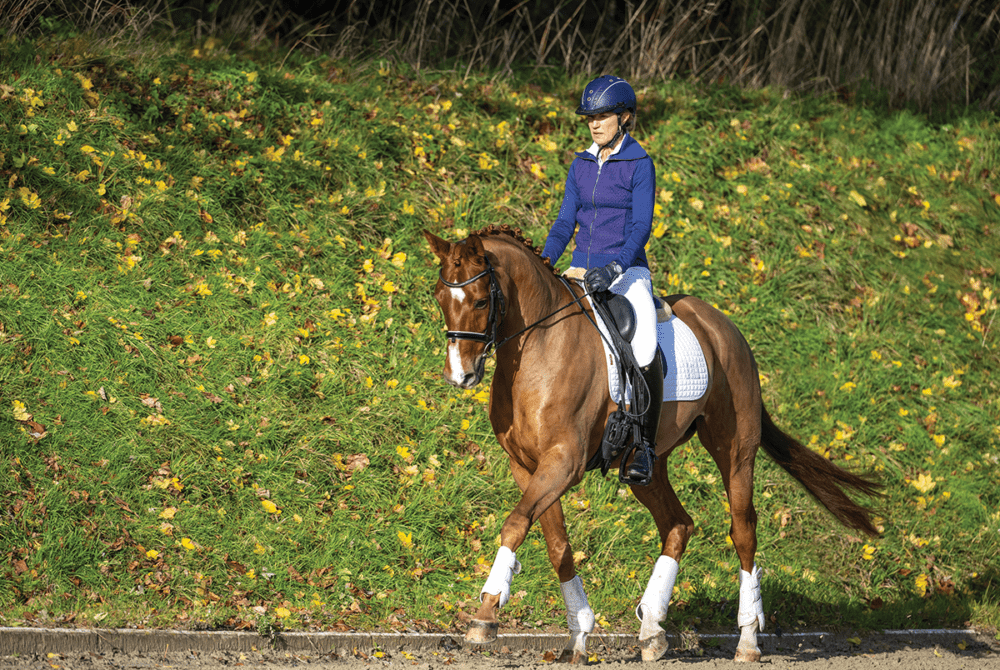Hot to trot
Posted 20th March 2023
Keen to unlock your horse’s potential in trot? Matt Hicks is here to help you ace this pace

Trot is the pace that can make or break first impressions. It’s a big-moving, expressive gait that can turn heads and really make people pay attention. The good news is, there’s plenty you can do to improve the trot.
Most horses don’t start life with a flashy trot – it takes time, training, and strength to achieve. I like to use these three everyday exercises to develop a horse’s trot. The main element they have in common is reactivity. If your horse doesn’t move forward off your leg, there’s little you can do to adjust the pace, which is why testing his listening skills is very important. And, of course, making sure you’re using clear aids that your horse understands forms the basis for harmonious training.
The perfect trot
What do you need to be given a perfect 10 for your trot? It has to show some specific elements, including…
- a clear two-beat rhythm, with the legs moving in diagonal pairs
- tracking up – the hindlegs should land in the imprint of the front feet (or a little in front) to demonstrate an active hindleg
- going forward and in front of the leg
- suppleness both across the back and laterally
First things first
When you’re warming up, incorporate as much stretching as you can. Widen your hands and lengthen your reins to help encourage relaxation across your horse’s back, which is imperative when working on hindleg activity. Check he’s quick off your aids and reacting well by incorporating flexing and transitions to test his response time.
Did you know?
Teaching your horse to work actively and track up – or over track – can take time. A good place to start is by watching him while he’s on the lunge – he should naturally track up when he’s freely trotting around, and it’s easier for you to spot whether he is and send him forward more if he’s not, so he learns the aids on the ground first.
Exercise one: On and back – stage 1
Making changes within the trot is a simple yet brilliant way to introduce cadence to the pace. The main purpose of this exercise is to ensure your horse is reacting to your aids and moving forward off your leg. The finished result should have him covering the ground more effectively and opening his frame. It’s also a challenge for the rider, as you need to focus on maintaining activity and rhythm through the downwards transition, without allowing the trot to slow.
For more of Matt’s exercises to improve your horse’s trot, check out April Horse&Rider – on sale now!











